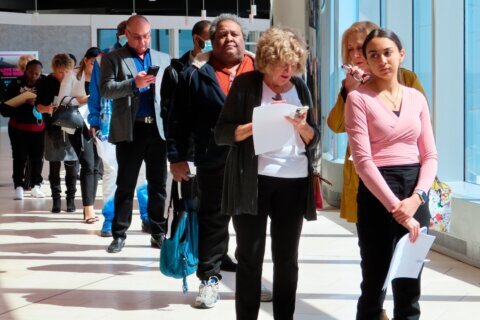Even with with pandemic forcing so many D.C.-area restaurants to close, some restaurateurs are braving the waters with new ones.
Eater DC has been keeping a running tally of new area restaurant openings, and many of them have something in common: A pandemic pivot to more emphasis on off-site dining.
Local restauranteur Mike Cordero, who owns eight neighborhood restaurants in Northern Virginia, is opening a second location of his new Taco Rock. The first location opened in Rosslyn last fall. The new location is in Pinecrest Plaza on Little River Turnpike in the Alexandria section of Fairfax County.
“I did sign the lease before all this pandemic started, and so I had to proceed with it. But one of the reasons I decided to proceed with it is that I couldn’t believe all the carryout business that we were doing (at our Rosslyn location). It is a good time to open up a fast-casual restaurant if you are doing carry-out and to-go,” Cordero told WTOP.
Cordero plans to open as many as 10 more Taco Rock locations. The restaurant’s gourmet tacos and other Tex-Mex dishes lend themselves well to off-site dining and are priced between $3.25 and $11.
Popular D.C. taco restaurant Surfside recently opened a third location at The Wharf, with a smaller footprint and emphasis on takeout, delivery and its small dining patio.
Matchbox Restaurant Group, which just emerged from bankruptcy reorganization, is opening two new locations in Virginia’s Reston and in Northwest D.C.’s Cathedral Heights neighborhood. They are much smaller than the existing locations. Matchbox said the new locations will have an increased focus on delivery and takeout.
Several D.C.-area restauranteurs are turning to “ghost kitchens,” foregoing on on-site dining completely and using their existing spaces or someone else’s to be 100% digital, with takeout and delivery only from their menus.
Many D.C.-area restaurants have been able to survive the spring, summer and fall by pivoting to takeout and delivery. Local jurisdictions have helped by allowing alcohol to be part of those orders, and approving fee-free permits for using sidewalks and street parking spaces for new or additional outdoor dining.
But it is easier for a restaurant to use those business models if they are built in from the ground up, specifically focused on efficient takeout and delivery operations.
For many existing restaurant owners, landlord disputes over lease renewals or renegotiating current leases because of the pandemic’s effect on cash flow have been widely reported. They are often cited as the reasons a restaurant has closed.
Cordero said he was fortunate not to have that problem.
“I was able to get great deals from the landlords to help me out through this situation. Nobody wants to see an empty spot. If they can work out a deal which is 30% of the rent, or 10% of the sales, whatever way, this is a way of helping them through these tough times.”








